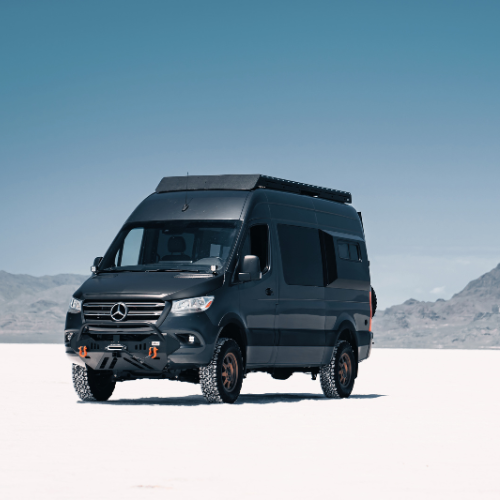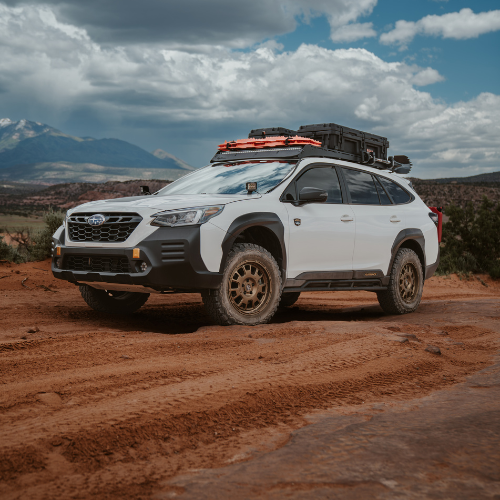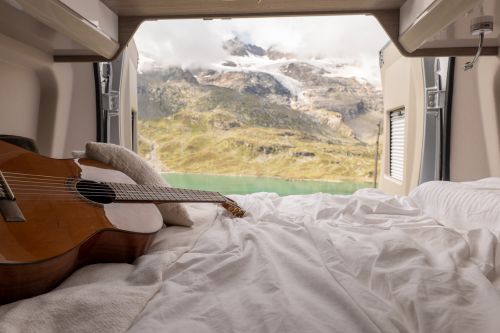Havelock Wool Vs. Thinsulate | What's best for your van build?
You're in the midst of your van conversion journey and you've finally done it, You've stumbled onto perhaps the most controversial topic in #vanlife...insulation. There is today still heated debate across the internet forms, and if you listen closely in the Burning Man parking lots you can hear whispers in the wind of "heat transfer" and "rockwool." It's a rabbit hole that can take you to some dark places, so in this blog, we wanted to focus on just a couple of prime choices: Havelock Wool and Thinsulate. They are both modern options, capable of holding up to a host of issues you face on the road and consequently, they've carved out their place as two top choices for van builds in 2023. Let's get into the nitty-gritty.
Cost

This is a big one, qué no? It's something all of us consider so let's get it out of the way. Havelock Wool is going to be a slightly higher upfront cost compared to synthetic alternatives. You can expect to pay $1.50 to $2.50 per square foot for Havelock Wool insulation, depending on where you source it. When you consider that it is literally sheared off of a sheep that is prancing around in a field somewhere, it's actually a pretty good price point.
Thinsulate, being a synthetic insulation material, generally tends to be more budget-friendly. It will vary depending on the thickness you choose, but it generally falls within the range of $0.50 to $1.50 per square foot. For those of you obsessed with efficiency and optimization, it boasts one other selling point- it's super lightweight, which contributes to fuel efficiency, and for you road warriors might save you cash in the long run.
How's the installation process?
Time is money, and no one looks forward to a complicated and time-consuming installation process. Neither of these installation processes is going to see you getting grey hairs, but there are some differences worth considering. For one, Havelock comes in batts or rolls that need to be cut and fitted. These rolls can sometimes be more awkward to cut and may take a while to get fitted to the contours of the interior of your van. Thinsulate, living up to its namesake, it is thin and easy to cut and shape.
Thinsulate also tends to be more user-friendly in that it comes with adhesive backing. Just peel off the backing just the same as peeling off the back of a poorly-thought-out bumper sticker that you will later get heckled for. Easy-peasy. Havelock Wool comes as is, no bells and whistles, so you'll have to use additional materials to attach it to the van's surfaces. This isn't a Herculean task but it is something to consider before making your choice.
How do they differ as insulators?
If you've been keeping track, the scorecards have been leaning Thinsulate's way over the past couple of rounds. Here is where the would-be underdog is going to make up a bit of ground. Havelock Wool is an excellent thermal insulator, and with it, you can expect to be cozy during winter and comfortable in the summer. Thinsulate is also a solid thermal insulator but it's sleeker, thinner, and more minimalist. If you're touring the continental US in Spring, Thinsulate is not going to let you down. If you at some point have plans to follow an Alaskan Ice Road Trucker's route in January, you might want to opt for the beefier option.
Two frustrating scenarios: you're about to fall asleep and you hear the drunken "Wooooooo"s from the campsite next door, or you have the sound on your podcast cranked to the max but the rocky desert road you're on won't let you hear a thing. These situations are why sound insulation matters. Luckily Havelock Wool has another big selling point- its exceptional sound-absorbing qualities. It can significantly reduce noise from outside the van, creating a quieter and more peaceful living space. It can also reduce noise from inside the van, which as anyone with small children can attest to, is a priceless feature. Thinsulate accomplishes both of these tasks as well, but to a lesser degree. Remember, it's not like cowbell- you don't always need a little more! You just need the amount that is right for you and your build, and that is something only you can decide.
Environmental Impact
Havelock wool is made from sheep's wool, a renewable and biodegradable resource. Wool is sheared from sheep without causing harm, allowing the animals to regrow their fleece. It's the natural option, the Whole Foods option, and it is an environmentally friendly choice that you can brag about to your crunchy granola friends. The production of wool has a low carbon footprint, and as wool is a natural insulator, it doesn't require any chemicals or additives during production. Many years from now, when your van punches its last time card and retires to the junkyard, the biodegradable wool lining the interior will be one of the first elements of your build to naturally decompose. It is an earth-first choice.
Decisions, decisions, decisions. But we're sure you are accustomed to those at this point in your van conversion journey. Whether you're drawn to the natural charm of Havelock Wool or the sleek efficiency of Thinsulate, both options require careful consideration. Ultimately, your choice between the two should reflect your unique priorities, values, and the specific requirements of your van build.
What about the rest?
Now that we've gotten through the debate on what kind of insulation is best for your van build, we need to decide where to go from here. Not everyone has their entire van completely built out in their head, but we generally have an idea of the direction to go. The "base" of a van build starts with 3 simple components, walls, ceilings, and floors. These three components make up the very basics of your adventure van and don't generally require as much thought because unless you plan to go full commando, you need these three components before you can get to the fun stuff, and interior design of your new pad on wheels.
Don't worry, we got you covered on these as well. The ceiling kits come in all different styles these days, but we always recommend using bamboo when possible. Although slightly more expensive, this material can handle harsh conditions without warping and bowing in wet, dry, hot, or cold conditions.
For walls, it comes down to upholstered or not. Upholstery can add another level of insulation as well as sound deadening and also makes the interior of your casa a nice and homey feeling. Here is the wall panel kit we recommend for ease of installation and perfect fitment.
Floors are floors and we suggest not getting too wrapped up in the hype unless you have very specific needs for your floors. Most floors are the same 1/2-inch plywood with a covering of your choice. Here is the floor kit we suggest for those looking to have a clean, custom look, but don't want to pay the big-time prices.
We hope this answers all the questions and maybe even provides some insight on a few things you may not have had on your radar. This time next year you will be on the road to nowhere in your newly converted van with stories to tell of your experience.
Happy Trails!









